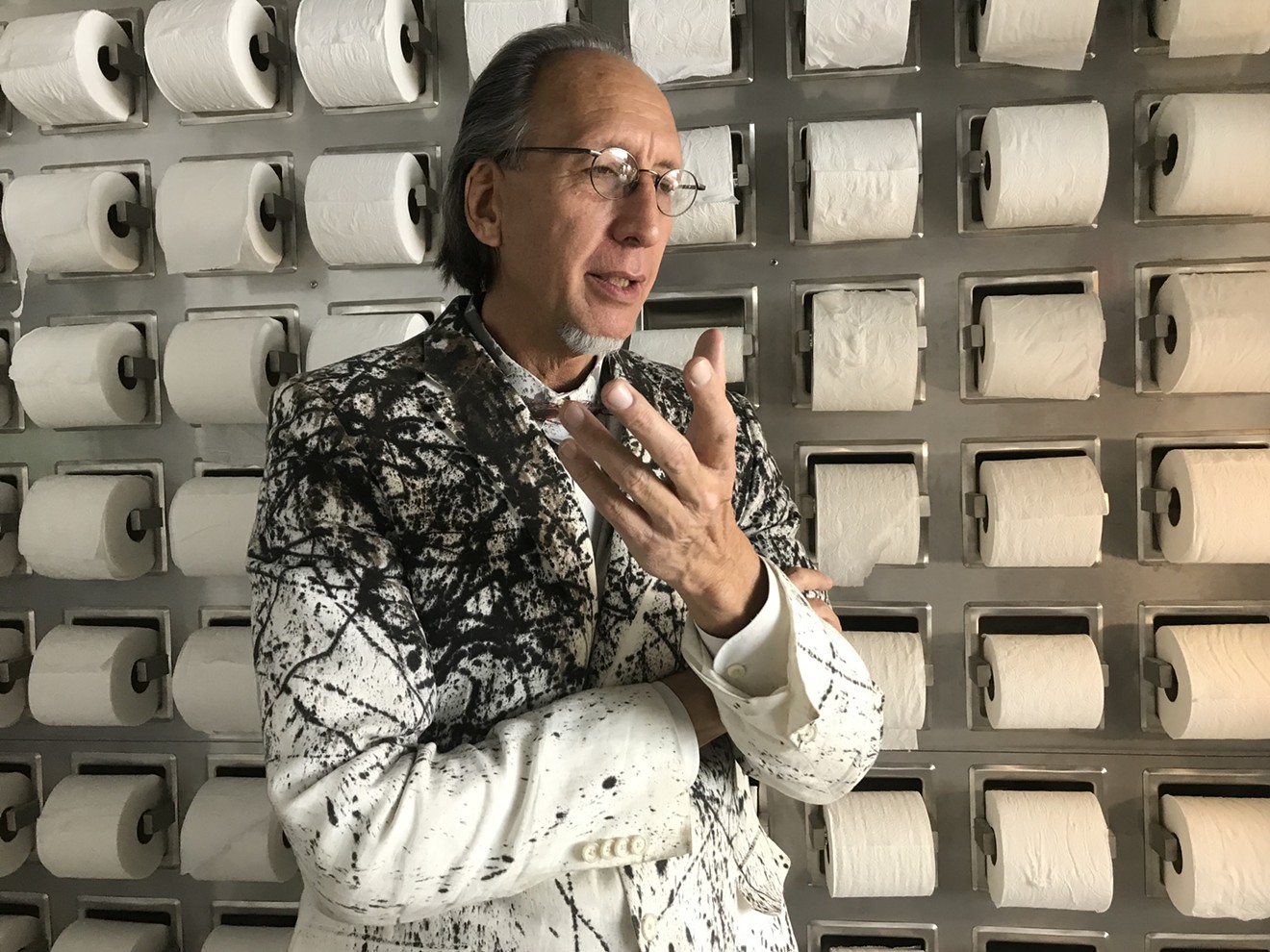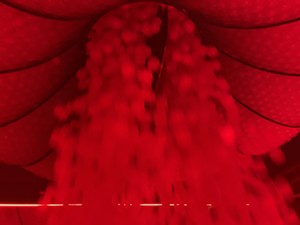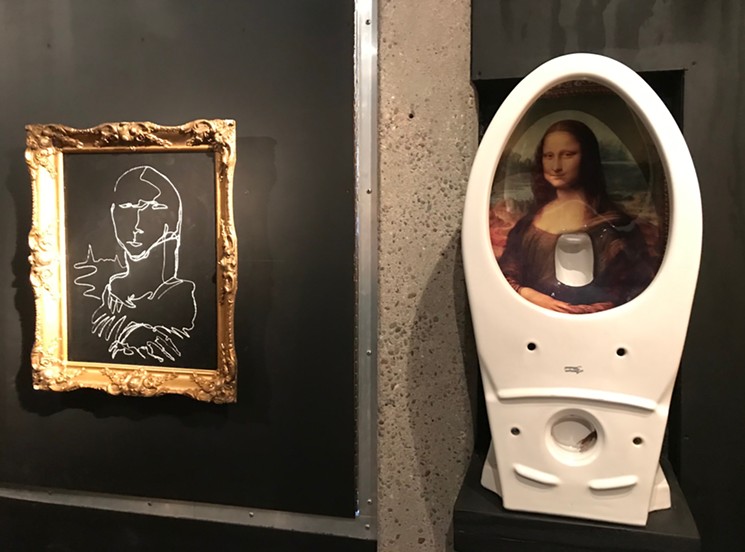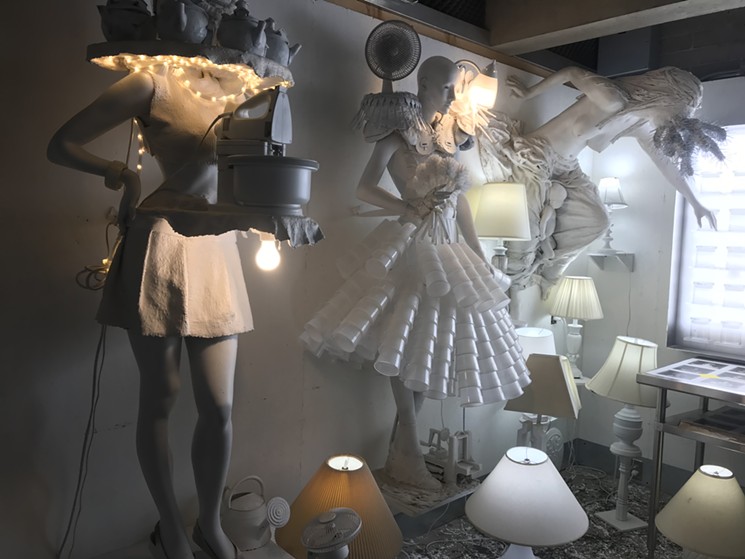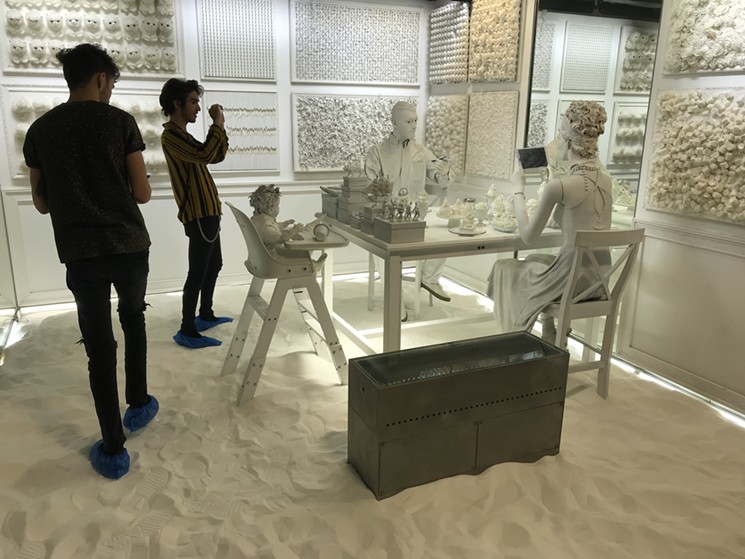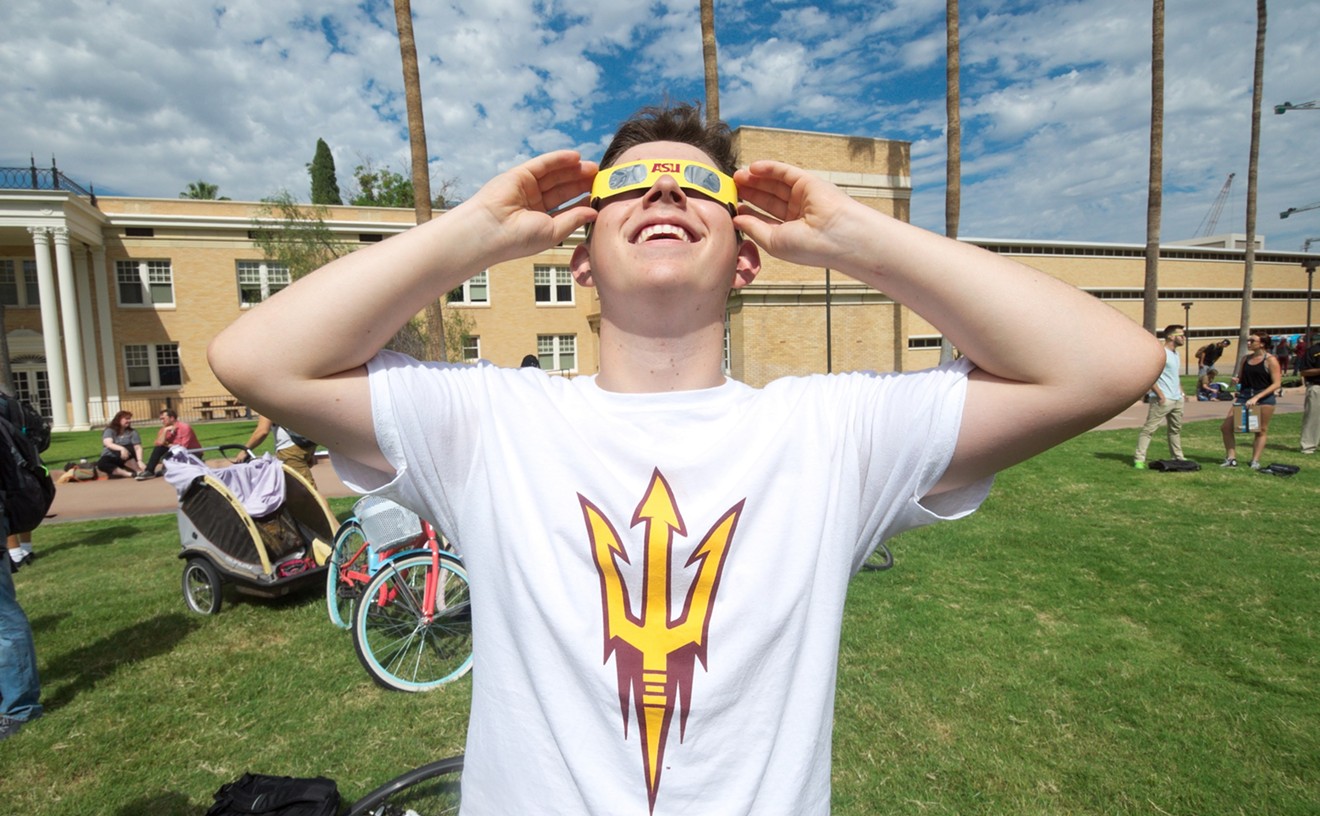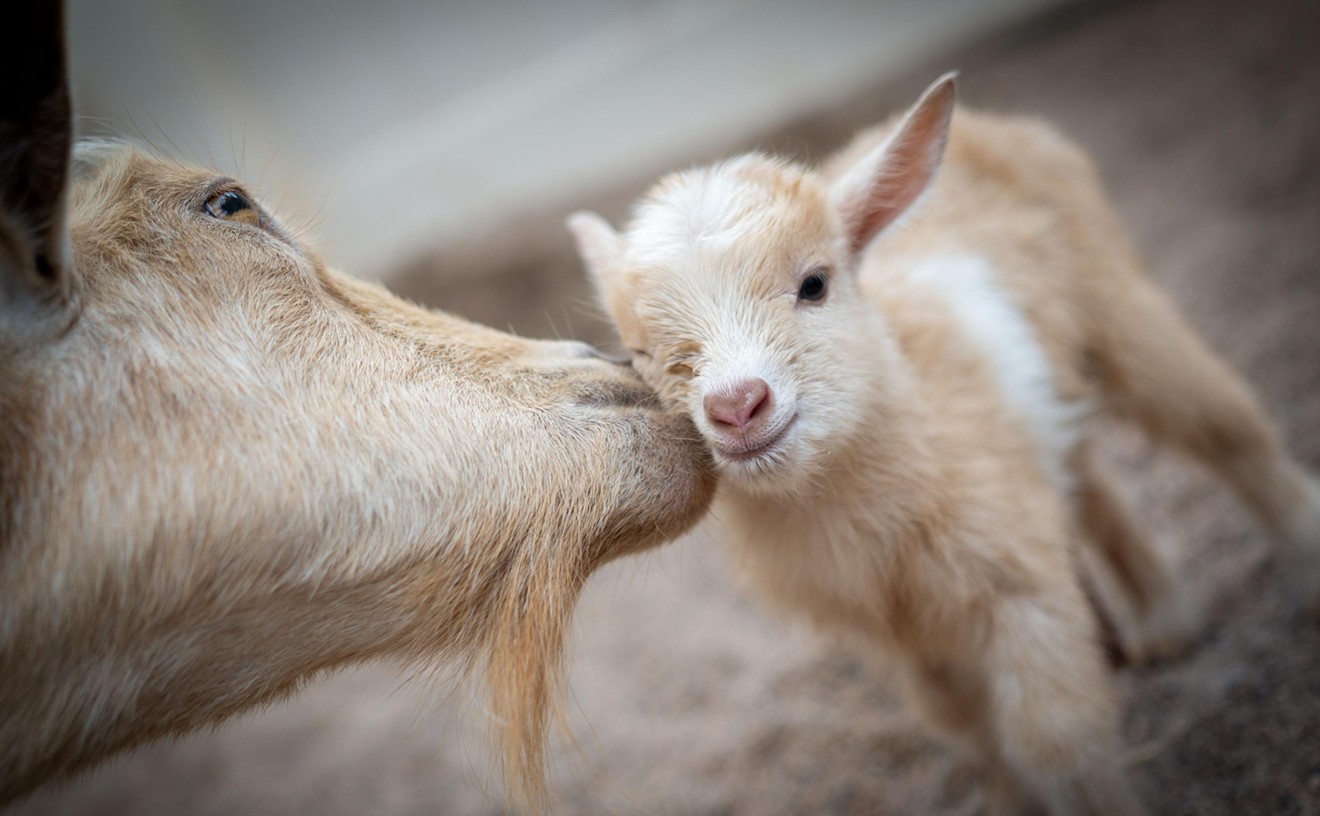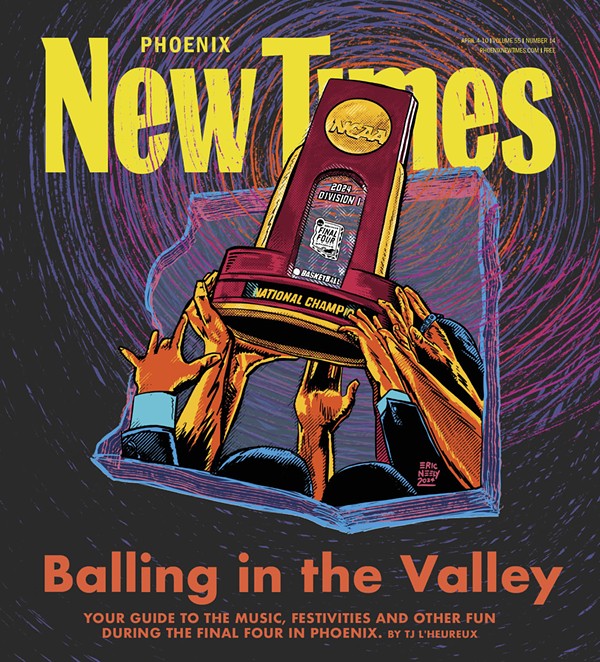Donning a cockroach bowtie and blazer covered in paint splatter, Tempe creative Bill Tonnesen greets visitors to The Lavatory Museum in Phoenix, where he’s filled six rooms with eclectic objects reflecting his dual fascination with fine art and toilets.
Part docent, part carnival barker, Tonnesen leads small groups through the space, where objects range from steampunk masks to toilet seats. At first glance, it looks like a big bunch of crap. Carefully curated, but crap.
Closer inspection reveals a visual poetic riff on contemporary life, exploring everything from the commercialization of art to parental neglect. Despite the prevalence of kitsch and novelty decor, the museum raises questions worth asking, including what’s being flushed down the metaphorical toilet in American society.
Located south of Camelback Road at 4700 North 12th Street, The Lavatory opened in November 2018 with a single immersive experience called a Mega Drop. The Friday and Saturday night events include an hour inside the venue's ball pit, where more than 100,000 fist-size balls fall from a spherical net, amid techno-pop music, fog effects, and swaths of multicolor lights.
In late April, Tonnesen opened six additional art spaces inside The Lavatory Museum. Now, people can pay $25 to explore the entire museum, including The Pit. Or they can buy a $25 ticket for a Mega Drop, and skip the six additional art spaces.
Tonnesen revels in highlighting his handy work as small groups of eager visitors make their way through the museum, infused with elements he’s designed for maximum shock value. They’re underwhelming at times, but intriguing nonetheless, if only because they reflect the grandeur of Tonnesen’s vision.
Visitors enter the museum in groups of four. First, they’re seated in a row of paint-splattered chairs. It’s one of several nods to Jackson Pollock, one of many famed artists whose works are referenced throughout Tonnesen’s eclectic assemblage of found objects and original artworks.
They slip blue paper booties over their shoes, and get their first taste of what’s to come – a brief explanation that that Sugar Room floor is covered in actual sugar. Then, they slip through the first of many doors, into the Mona Lisa Gallery, where every artwork is a riff on Leonardo da Vinci’s famous portrait of the woman with the ever-so-slight smile.
Here, it becomes apparent that Tonnesen’s enterprise is steeped in social commentary.
A Mona Lisa knock-off appears to nearly fall from a gallery wall each time a visitor walks past it, the mechanism for making it happen emitting a loud noise inside a space that’s otherwise quiet, except for visitor chatter about its more peculiar elements – including a giant cow dotted with Mona Lisa images, which hangs suspended upside down from the ceiling at the center of it all.
The room includes a Mona Lisa image framed by a toilet seat, and a Mona Lisa image surrounded by cardboard signs like those often associated with homeless people asking for money from strangers on the street.
Where some may see only kitsch, others will recognize art historical references, including an apparent nod to Jean-Michel Basquiat’s treatment of da Vinci’s famed portrait. References to renowned artists, including Tonnesen favorite Andy Warhol, are prevalent throughout the museum.
Most obvious is the Infinity Room, which plays on works by Yayoi Kusama, a contemporary Japanese artist best-known her obsession with dots. The Broad Museum in Los Angeles includes two of the artist’s Infinity Mirror Rooms. Here, visitors are flanked by two mirrored spaces filled with dozens of eclectic lamps in various types of white.
White dominates two additional rooms inside The Lavatory Museum, including a White Room where some of the clear containers lining a wall contain dead specimens of feeder mice. Viewers see four live mice inside an oblong box place on the floor inside the Sugar Room, where walls are lined with framed groupings of like objects ranging from sharpened pencils to marshmallows.
The Sugar Room, where the floor is literally covered in white grains of processed sugar, is the museum’s most polished offering. It’s anchored by a large table covered in cupcakes and other sweets, where parents sit consumed by digital devices as a child in a high chair looks on. Baby sculptures are tucked away in several museum spaces, giving viewers plenty to ponder if they’re so inclined.
Visitors are sworn to secrecy before entering the Black Room, raising expectations that something truly extraordinary will happen there. Turns out, it’s rather underwhelming, albeit modestly entertaining. Most disappointing is the Rest Room, where opening doors for various portable toilets reveals assorted art installations, including one where a roll of toilet paper layered with fake paper money is mounted near a steampunk-inspired figure.
The museum tour lasts an hour, which includes time in a small space filled with costumes, masks, and props — which visitors can wear while they take photographs in one of two Claymation booths.
The Lavatory Museum is the latest option in a local arts landscape increasingly dominated by interactive, immersive art and Instagram-friendly settings.
Walter Productions opened its Burning Man-inspired Where?House, where it presents multimedia art events, just last year. Wonderspaces opened its first permanent venue, located inside Scottsdale Fashion Square, in April.
Meow Wolf recently announced its plans to open its first hotel in Phoenix, although it may be years before that happens. And there's a temporary pop-up venue called The Scene in Tempe, which has 11 rooms and 23 scenes designed as backdrops for Instagram photographs.
How well The Lavatory Museum fares will depend on whether the people who visit embrace Tonnesen’s vision, or feel like they've just flushed $25 down the toilet.
[
{
"name": "Air - MediumRectangle - Inline Content - Mobile Display Size",
"component": "18478561",
"insertPoint": "2",
"requiredCountToDisplay": "2"
},{
"name": "Editor Picks",
"component": "16759093",
"insertPoint": "4",
"requiredCountToDisplay": "1"
},{
"name": "Inline Links",
"component": "17980324",
"insertPoint": "8th",
"startingPoint": 8,
"requiredCountToDisplay": "7",
"maxInsertions": 25
},{
"name": "Air - MediumRectangle - Combo - Inline Content",
"component": "16759092",
"insertPoint": "8th",
"startingPoint": 8,
"requiredCountToDisplay": "7",
"maxInsertions": 25
},{
"name": "Inline Links",
"component": "17980324",
"insertPoint": "8th",
"startingPoint": 12,
"requiredCountToDisplay": "11",
"maxInsertions": 24
},{
"name": "Air - Leaderboard Tower - Combo - Inline Content",
"component": "16759094",
"insertPoint": "8th",
"startingPoint": 12,
"requiredCountToDisplay": "11",
"maxInsertions": 24
}
]

